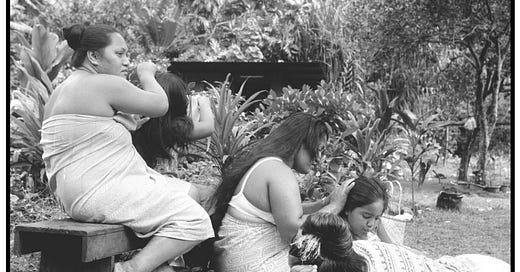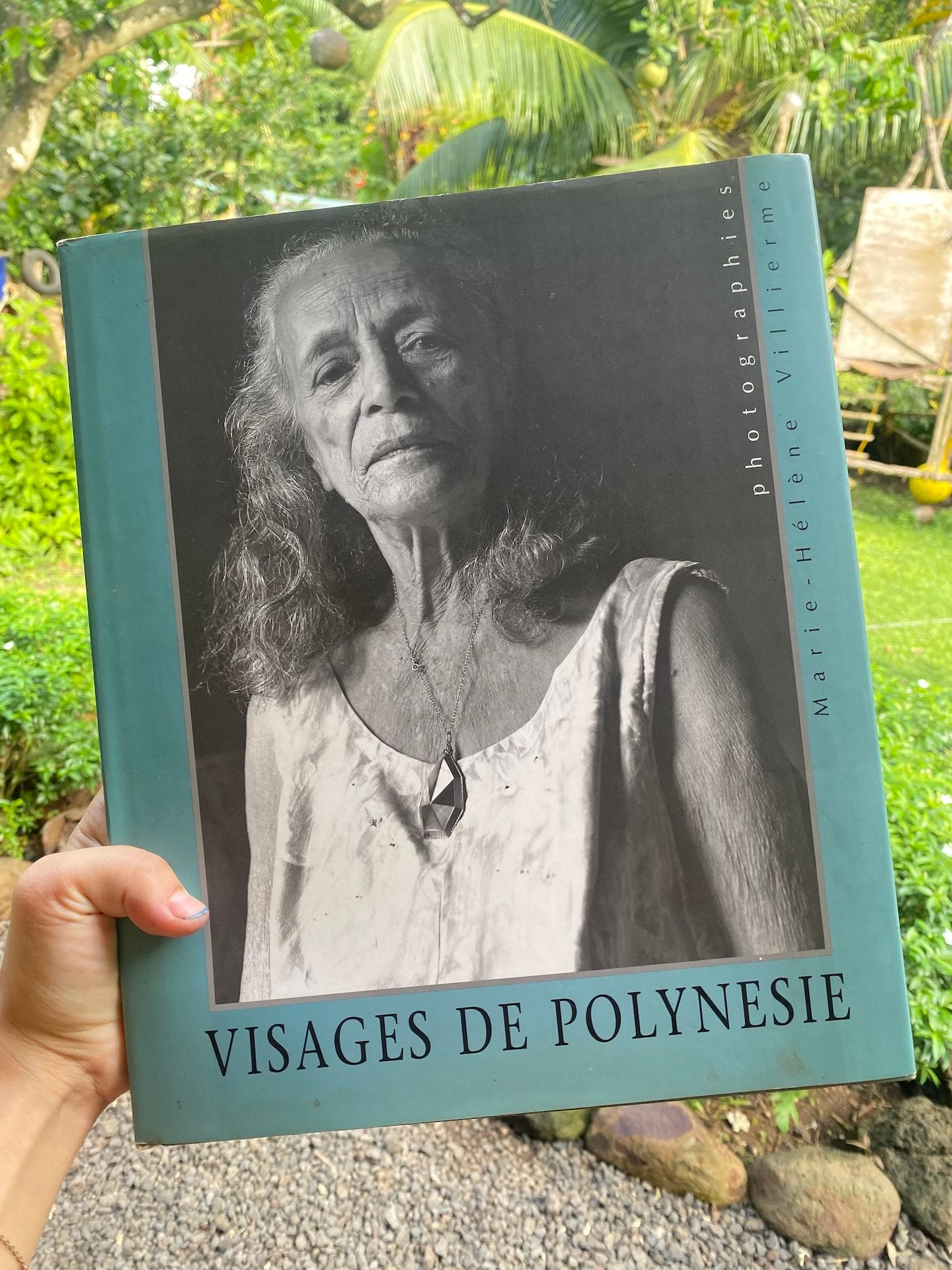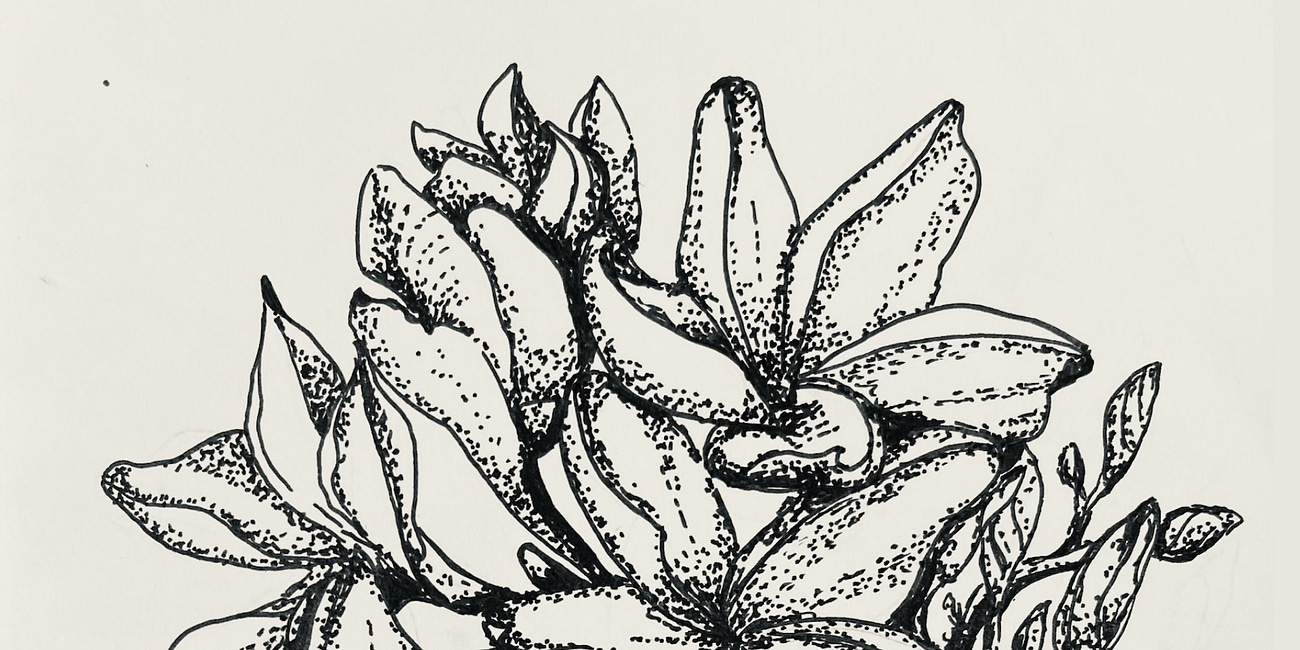It was recently Mother’s Day in Australia, while French Mother’s Day is still to come. I’m not in the same country to celebrate with my mum or grandma, so I thought I’d make this newsletter about some depictions of motherhood in art in the Tahitian islands. This newsletter is dedicated to my mum, who comments on nearly every one of my newsletters - sad we weren’t there to celebrate you!
I became a mum last year and I’ve only got 7 weeks to go until I’m a mum for the second time. I wrote about the challenges and enjoyments of motherhood when Auguste turned one back in February:
When Auguste arrived, it was the most elated and most scared I’ve ever been in my life. This tiny, fragile being was put in my care and I would brave sleep deprivation and searing nipple pain to keep him alive.
Motherhood is a subject that fascinates many artists, whether it’s a rendering of the Madonna and child, or the grief and struggle that comes with the responsibility, or just the comfort of a fleeting embrace.
Here are some depictions of motherhood I’ve found by Polynesian artists and artists who have spent time here.
Marie-Hélène Villierme
This wonderful book we have in our bookshelf shows half-Tahitian half-Italian photographer Villierme’s attempt at capturing everyday life in the Polynesian islands.
Her photos are snapshots into relationships between family members, cultural practices like pandanus weaving, and the unique tattoos that adorn faces and bodies.
One of my favourite shots is a group of women and girls picking the lice out of each others’ hair. If that’s not a necessary part of motherhood, I don’t know what is! I can remember my mum doing the exact same thing when I was a little kid.
There are also some tender portraits, such as this one of a social worker and her son:
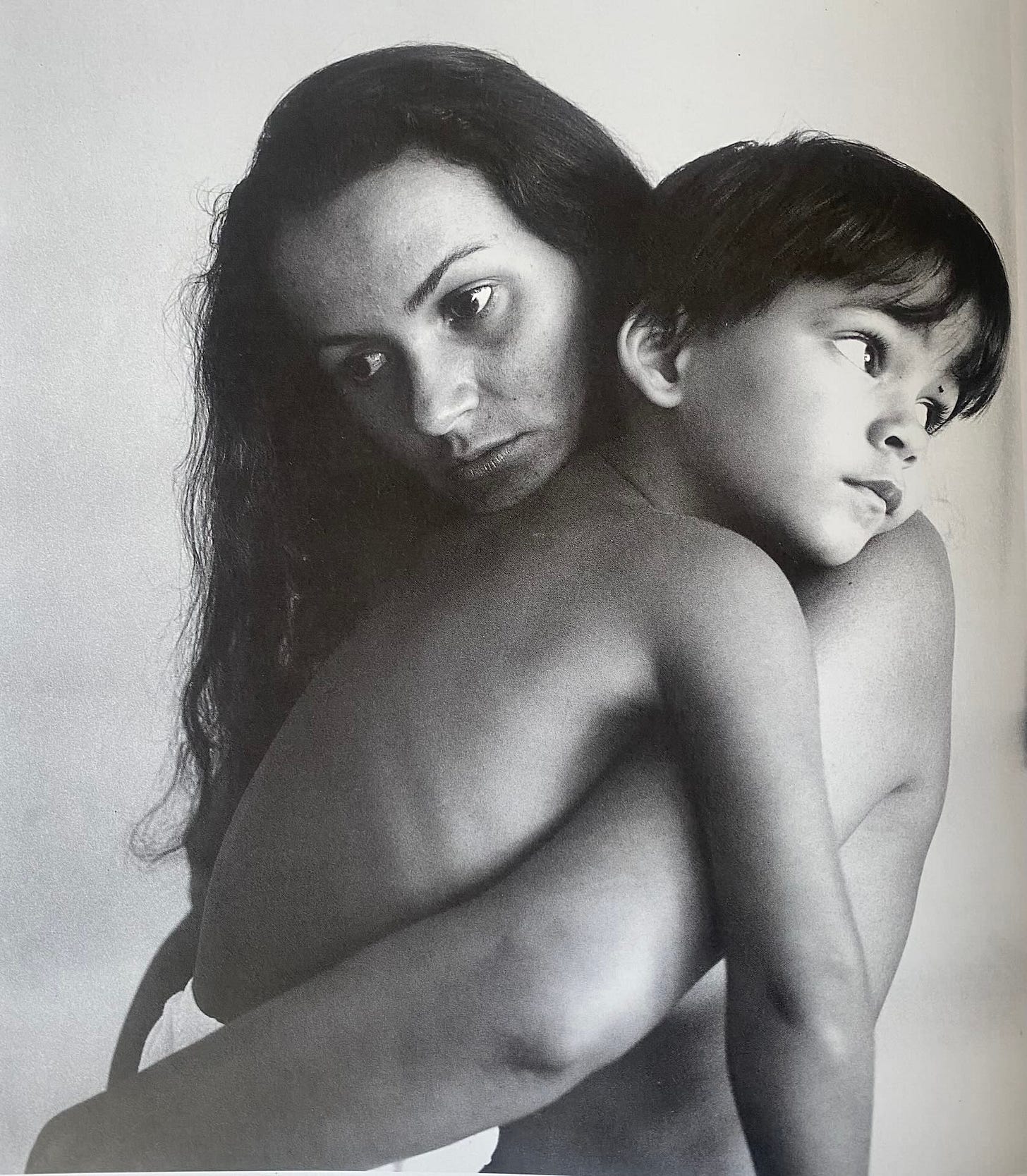
Or this one of a grandmother and her granddaughter harvesting the veggie patch:
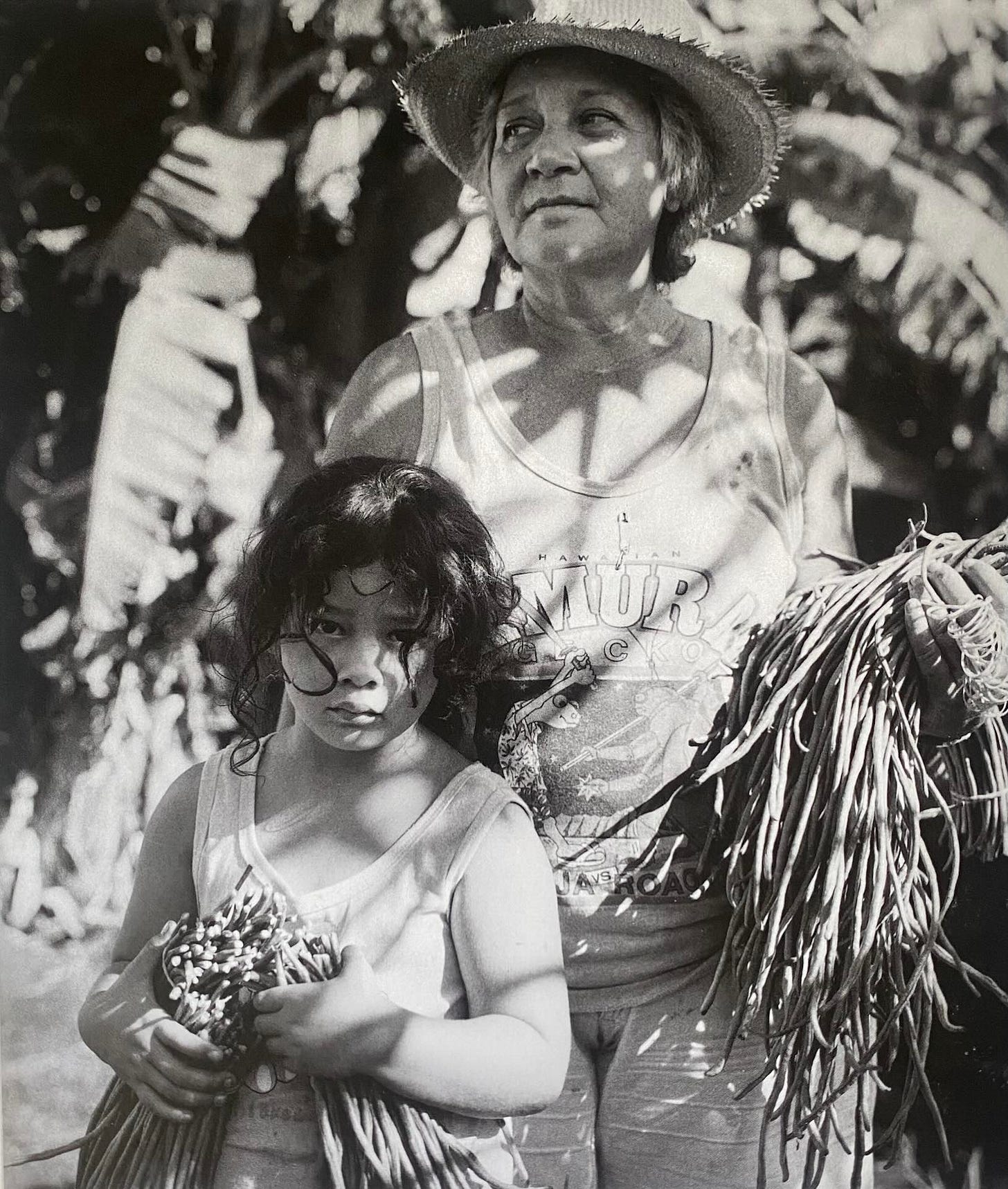
Doesn’t matter where you are in the world, there’s no replacement for a hug from mum, a potter in the veggie patch with nana, or a mother’s hands to pick the lice out of your hair.
Jacques Boullaire
I’ve previously written about Boullaire and his sketches of the Tahitian islands. Revisiting his sketchbooks, I found some gorgeous little vignettes of mothers scattered throughout the pages.
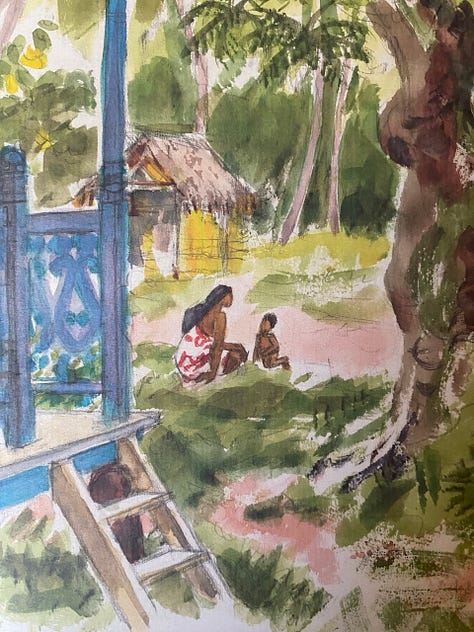

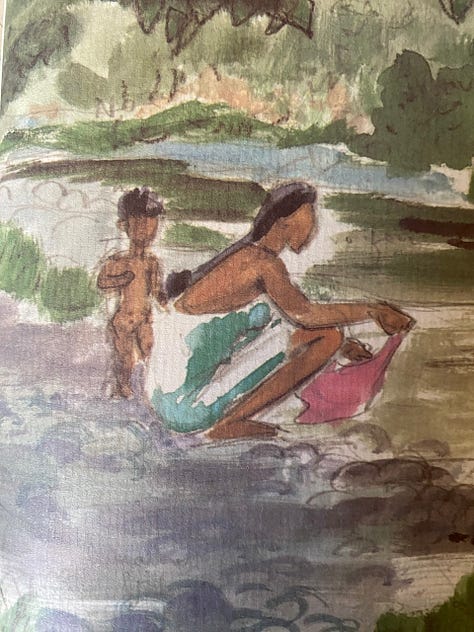
And one of my favourites is this young woman with a far-away expression while she feeds her baby:
I like that Boullaire captures moments of the every day with such simplicity. It really brings back memories of pottering after mum as she went about the various chores required to keep us alive.
Bobby
I’ve written about Bobby in the past as well, and I wanted to revisit the book on Polynesian legends to see if there were any about motherhood. A few of them were a bit freaky, such as the cannibal mother Nona, but one really stuck with me.
A common practice here is to guard the placenta after the birth and bury it underneath a tree.
I loved this painting which depicts the bond of a child with mother earth:
There is nothing stronger than the bond linking a Polynesian child to its land (fenua). It is like a mother (metua) to him. It supports him, it feeds him and one day will claim him back. After a child is born it is customary for the parents to bury the placenta (pu fenua) and plant on the spot a tree to grow in harmony with the child.
When I gave birth to Auguste at Tumu Ora, we were encouraged to bring a box to store the placenta in if we were going to take it home. We took a white Tupperware, which we then had to send home with my brother-in-law to store as our Air B’n’B didn’t have a freezer!
Once at home we buried the placenta underneath a cinnamon tree in the garden. We’ll do something similar for the next one. My sister-in-law has her placenta under a coconut tree, which she talks about in this video:
Paul Gauguin
Gauguin’s name is synonymous with art in the Tahitian islands. While here, he completed a number of formal portraits of Polynesian mothers and children which I honestly find a bit lifeless and stiff.
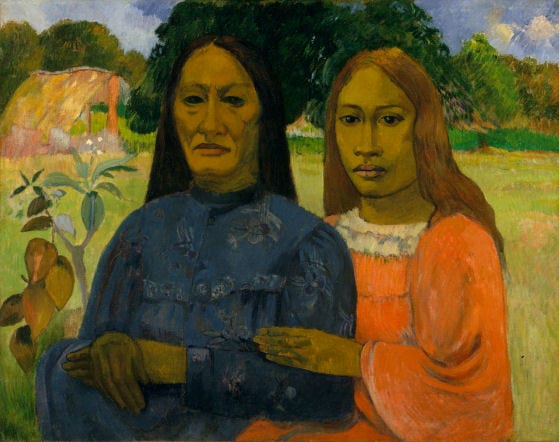
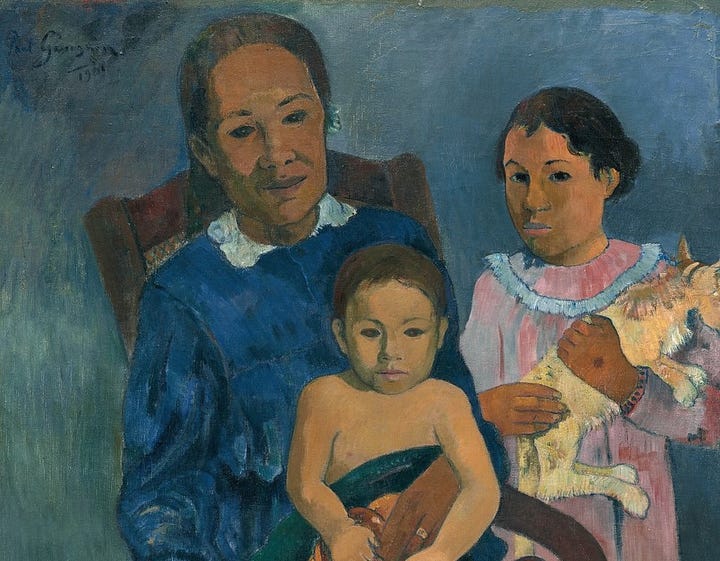
Where he really shines is showing the more natural and casual moments in motherhood, such as these two paintings of women breastfeeding:
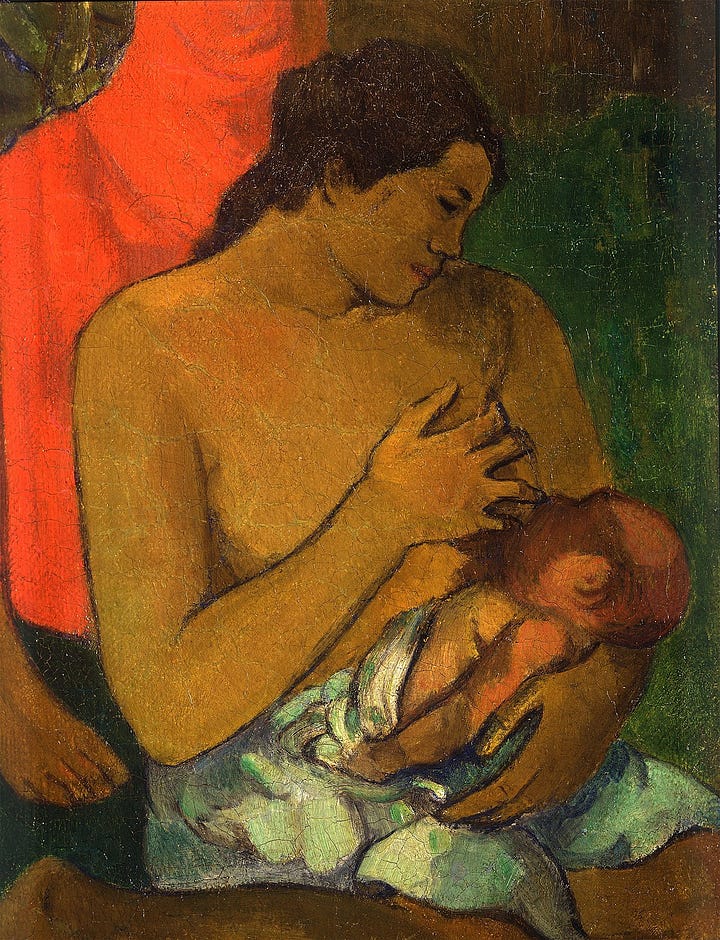
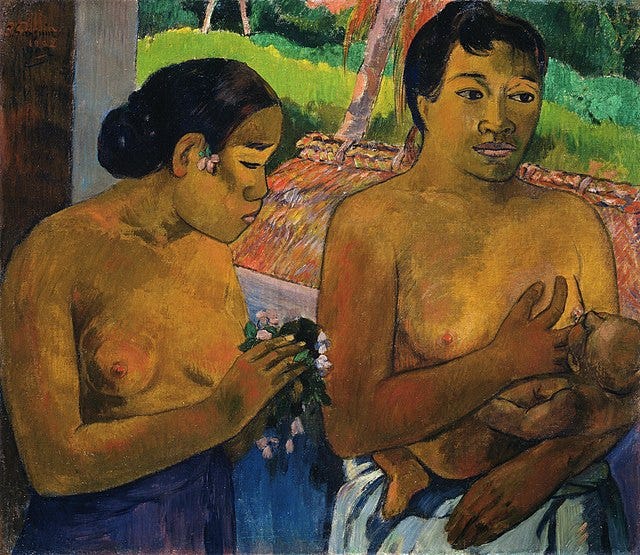
One thing I love about the Tahitian language is how literal things can be. The word for breastmilk or breastfeeding is titi mama. So good!
There’s a very welcoming culture here for breastfeeding mothers and I had plenty of encouragement when I was feeding Auguste out and about. I’m glad we got to have the experience of breastfeeding together, even if it was challenging at times.
All of these beautiful portraits of mothers has inspired me to go do some sketching! Wherever you are in the world, I hope you had (or will have) a lovely Mother’s Day.
If you liked this article, try reading…
Tahiti and her islands in art: Ape
I’ve previously done posts about Boullaire and Bobby, and in the spirit of fairness wanted to feature some female artists as well as males. The first one that came to mind wasn’t someone from the distant past, but an artist I stumbled across after visiting Tahiti, in a very cute store called


